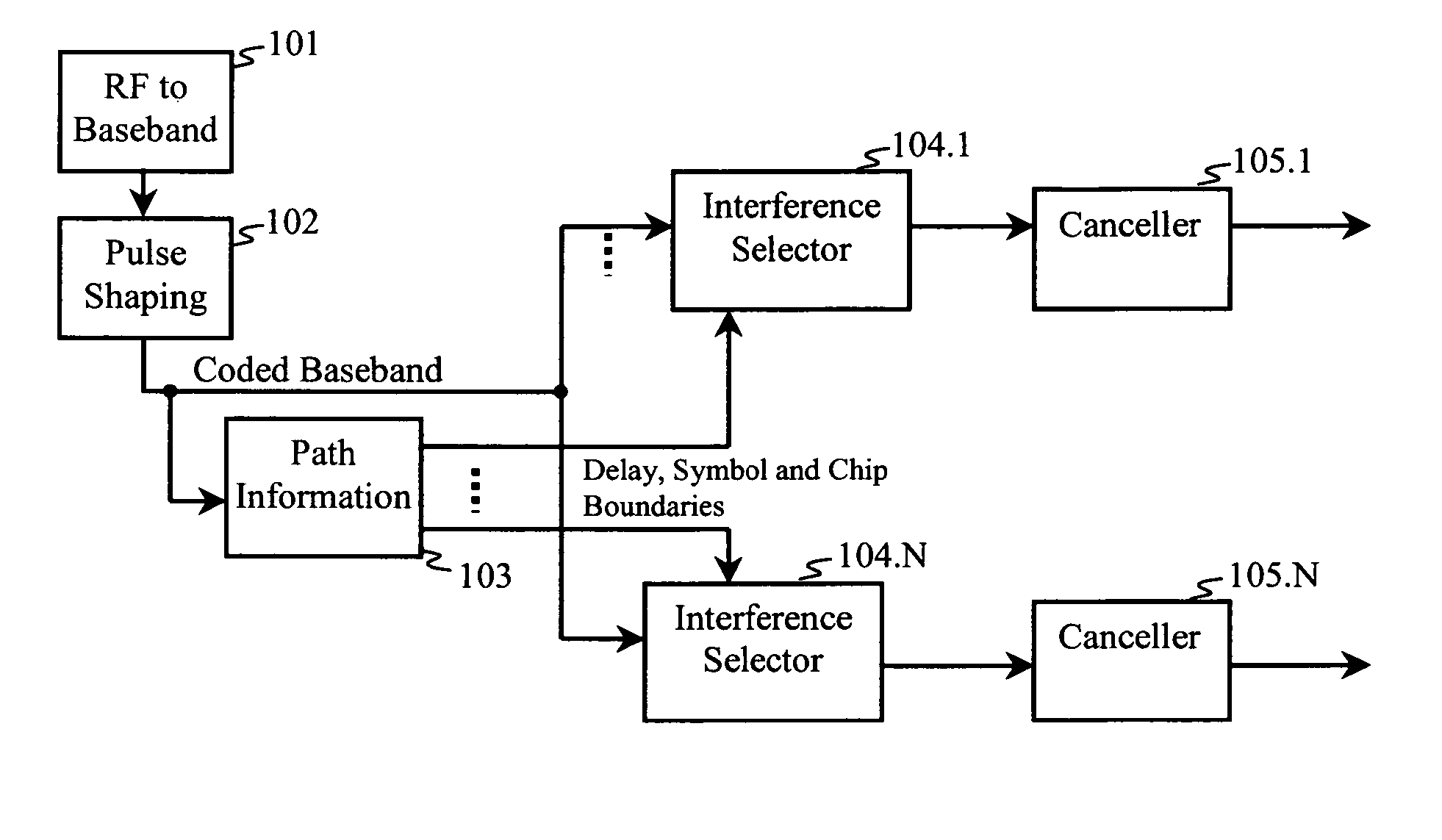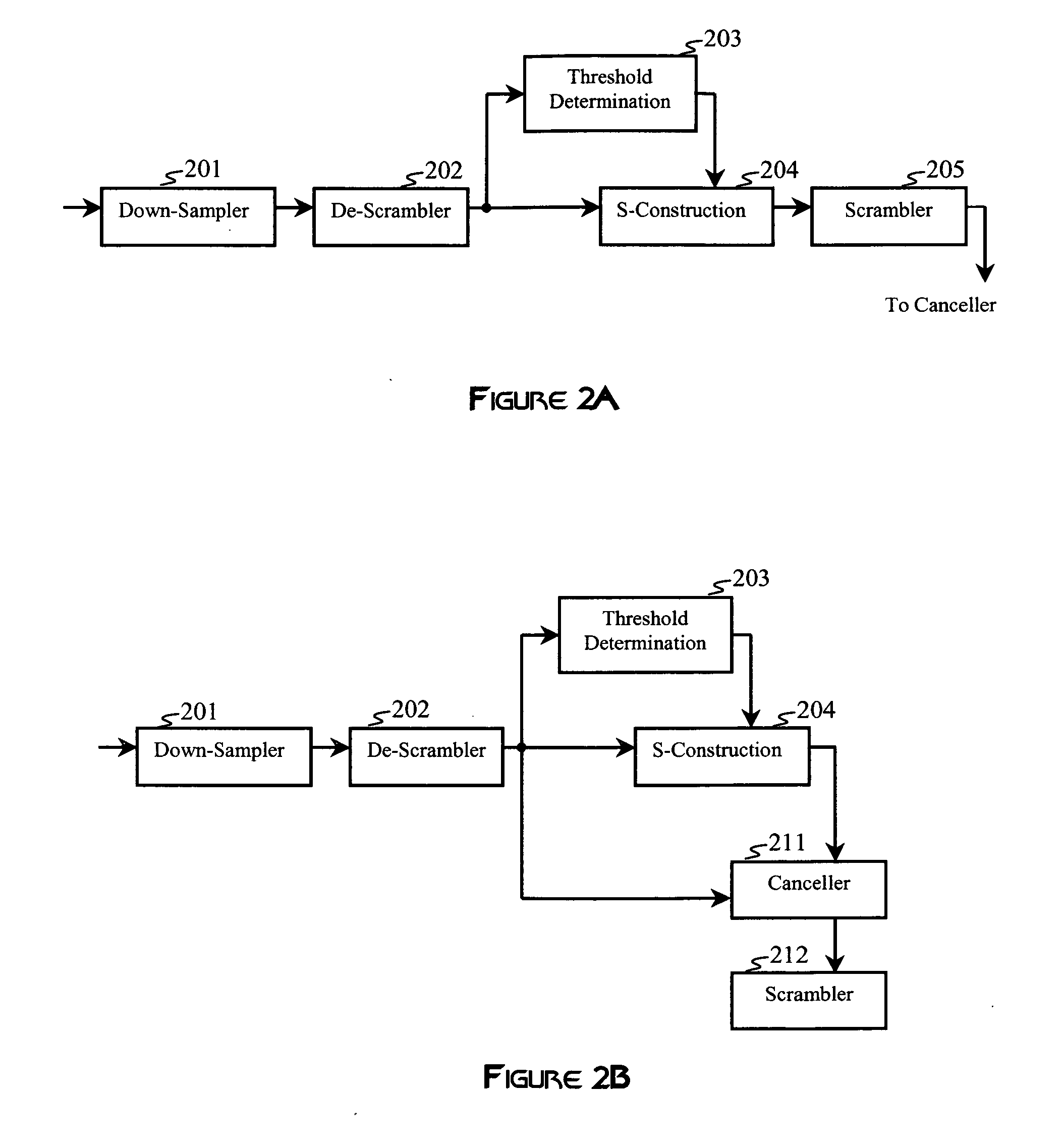Interference selection and cancellation for CDMA communications
a technology of interference selection and cancellation, applied in the field of signal processing, can solve the problems of uncertainty, noise, and uncertainty in the cancellation process, and achieve the effects of reducing system complexity, improving accuracy, and reducing complexity of implementation
- Summary
- Abstract
- Description
- Claims
- Application Information
AI Technical Summary
Benefits of technology
Problems solved by technology
Method used
Image
Examples
Embodiment Construction
[0025]FIG. 1 shows a receiver (e.g., a mobile handset) configured to receive a Code-Division Multiplex Access (CDMA) signal transmitted by at least one base station. This receiver embodiment may process signals received from a transmit-diversity system (e.g., at least one transmitter comprising a plurality of transmitter antenna elements). Signals received at the receiver's antenna include a linear combination of transmissions intended for a plurality of users in the cell. Furthermore, the received signal typically includes multipath distortions and additive noise. An RF-to-baseband module 101 converts the received signal to a down-converted baseband signal, which is then passed through a pulse-shaping filter 102. The down-converted signal is typically not compensated for physical-channel distortions. Since the down-converted signal usually includes in-phase and quadrature-phase components, it is sometimes referred to as an “IQ” signal.
[0026] A path-information module 103 identifie...
PUM
 Login to View More
Login to View More Abstract
Description
Claims
Application Information
 Login to View More
Login to View More - R&D
- Intellectual Property
- Life Sciences
- Materials
- Tech Scout
- Unparalleled Data Quality
- Higher Quality Content
- 60% Fewer Hallucinations
Browse by: Latest US Patents, China's latest patents, Technical Efficacy Thesaurus, Application Domain, Technology Topic, Popular Technical Reports.
© 2025 PatSnap. All rights reserved.Legal|Privacy policy|Modern Slavery Act Transparency Statement|Sitemap|About US| Contact US: help@patsnap.com



